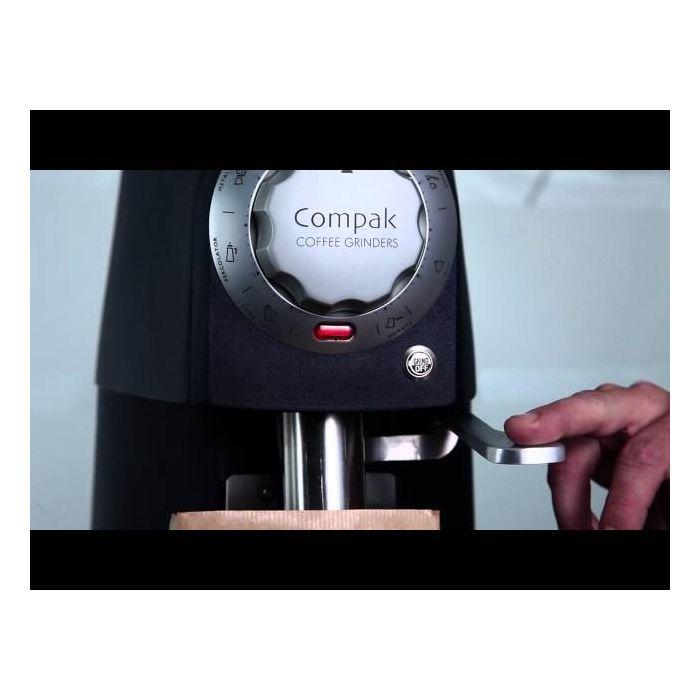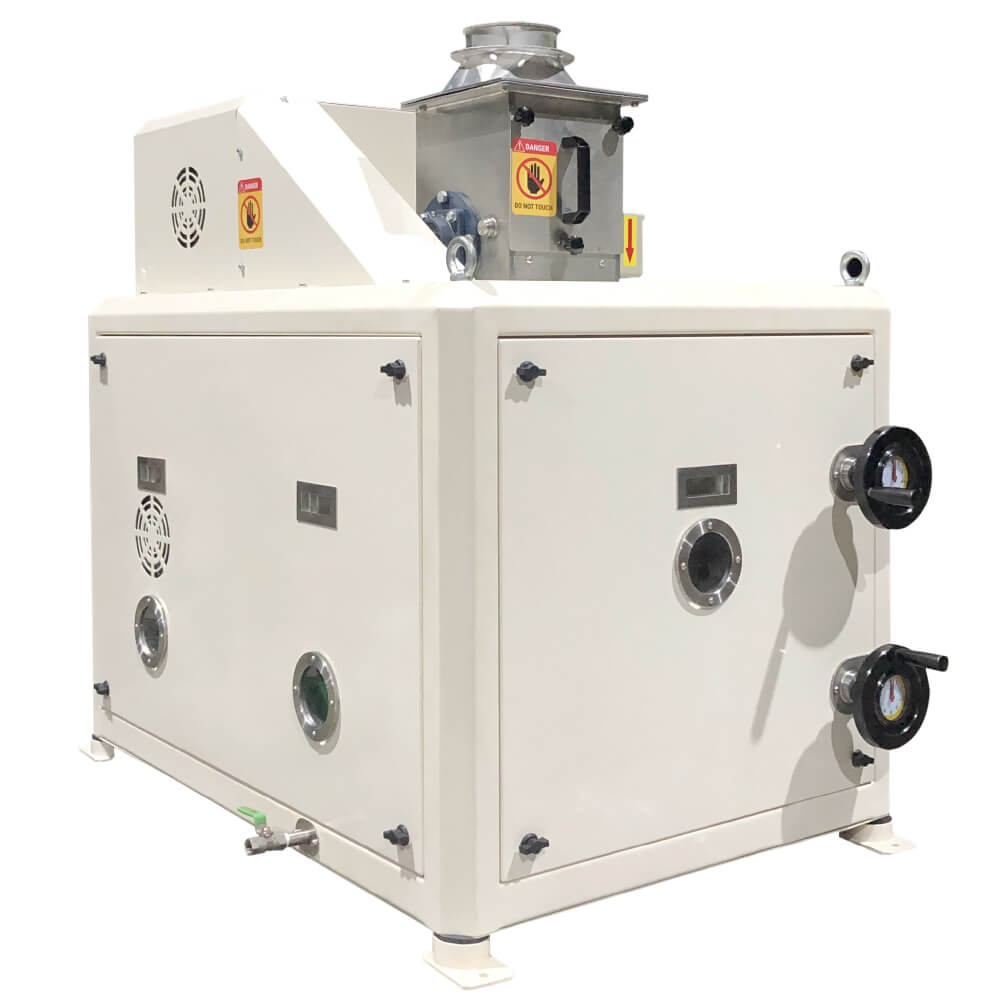Top Functions to Try To Find in an Industrial Coffee Grinder
When examining a commercial coffee mill, it is necessary to identify vital features that impact both performance and longevity. Uniformity in work size is essential for optimal removal, while flexible grinding rate permits an equilibrium between performance and quality. Furthermore, the choice of products and style contributes substantially to toughness and convenience of upkeep. The subtleties of these functions can substantially affect not only the quality of coffee produced but likewise the overall operational effectiveness. Understanding these elements is crucial for making a notified choice that fulfills details company needs.
Work Size Consistency
While different aspects can influence the top quality of brewed coffee, grind size consistency remains extremely important in achieving optimal extraction. The harmony of coffee grounds directly influences the developing procedure, as uneven bit dimensions can bring about over-extraction or under-extraction. This incongruity causes unbalanced flavors, where specific notes may be overpowering while others are muted.
Industrial coffee grinders are developed to supply a high level of precision, frequently using burr grinding mechanisms to make sure a consistent grind dimension. Unlike blade mills, which can create a mix of penalty and rugged particles, burr grinders squash the beans in between two surfaces, permitting better control over grind dimension. This consistency is vital throughout different developing approaches, whether espresso, French press, or pour-over, as each technique needs specific work dimensions for optimum flavor extraction.
In addition, consistency in work dimension adds to the general performance of the brewing procedure. An uniform grind enables also water circulation, reducing the risk of improving and funneling extraction performance. In recap, purchasing an industrial coffee mill with a concentrate on work size consistency is crucial for achieving top notch coffee with desirable taste profiles.
Grinding Rate
Grinding rate plays a vital role in the total performance of commercial coffee mills, directly impacting both the quality of the grind and the performance of the procedure. Industrial Coffee Grinder. Higher grinding rates can substantially boost the throughput, making it feasible to refine bigger quantities of coffee beans in a shorter time structure. This is especially important for services that count on high-volume manufacturing, such as coffee roasteries and coffee shops
Nonetheless, while rate is vital, it is equally essential to stabilize it with the quality of the grind. Excessively high grinding rates can generate warm, which may adversely affect the flavor profile of the coffee by causing the beans to lose crucial oils and aromas. A grinder that provides adjustable rate setups can provide optimum versatility, permitting operators to tailor the grinding procedure according to specific needs.
Additionally, the grinding rate should be constant to make certain harmony in the work dimension, additional adding to the total preference and developing top quality of the coffee. In recap, reviewing grinding rate is essential for selecting a commercial coffee mill that meets both efficiency and top quality demands.
Build Quality and Durability
The effectiveness of an industrial coffee grinder is not entirely identified by its grinding speed; build top quality and durability are similarly crucial factors that affect long-term efficiency and reliability. A well-constructed mill will stand up to the roughness of day-to-day use, making it an audio investment for any industrial operation.

Durability additionally includes the mill's motor and inner mechanisms. Industrial coffee grinders should be outfitted with heavy-duty electric motors capable of sustaining prolonged operation without overheating. Durable burrs are vital, as they straight affect the quality of the work and contribute to the total durability of the machine.

Simplicity of Usage and Maintenance
Regularly prioritizing convenience of usage and maintenance can considerably improve the functional performance of an industrial coffee grinder. Straightforward features such as instinctive controls and clear labeling are necessary for reducing downtime and ensuring that operators can swiftly adapt to the tools. An ergonomic design, consisting of height-adjustable receptacles and available grinding chambers, permits comfy operation and assists in the loading and unloading of coffee beans.
In addition, simplicity of upkeep is vital for prolonging the life expectancy of the grinder. Devices with removable parts and elements made for quick cleansing can enhance maintenance tasks, minimizing the moment invested in routine maintenance - Industrial Coffee Grinder. Look for mills that integrate self-cleaning mechanisms or need marginal disassembly, as these attributes can save important labor hours
In addition, clear maintenance routines and documentation are essential. Grinders that include extensive user handbooks outlining maintenance treatments can help operators adhere to ideal practices, guaranteeing constant performance and quality. By spending in a commercial coffee grinder that emphasizes convenience of usage and maintenance, services can boost performance, minimize functional costs, and maintain the high criteria expected in coffee look at this web-site manufacturing.


Sound Level Reduction
When picking an industrial coffee mill, noise level decrease is an important element that can greatly impact the work environment. High noise levels can result in employee exhaustion, reduced focus, and potential hearing damage gradually, making it necessary to pick a mill developed with sound-dampening features.
Seek mills that incorporate advanced noise-reduction technologies, such as sound-insulated housings and vibration-dampening mounts. These functions assist to reduce functional audios, creating a quieter ambience conducive to efficiency. Industrial Coffee Grinder. In addition, choosing grinders equipped with low-noise electric motors can additionally improve sound decrease, making sure a much more pleasant functioning atmosphere
Consider the mill's general design, too. Models with incorporated sound-absorbing materials can significantly reduce noise exhausts during grinding cycles. In addition, the placement of the grinder within the workspace need to be strategic. Placing it on a steady, heavy surface can assist to minimize resonances that add to sound.
Ultimately, purchasing a coffee grinder that prioritizes sound decrease not only enhances the convenience of staff members but additionally lines up with a commitment to preserving a secure and productive work setting. This attention to detail can bring about improved worker satisfaction and retention.
Final Thought
In summary, selecting a commercial coffee mill requires careful consideration of numerous crucial attributes. Grind size uniformity is necessary for optimum extraction, while flexible grinding rate assists in an equilibrium between throughput and high quality.
Industrial coffee grinders are designed to provide a high level of precision, typically utilizing burr grinding systems to make sure a consistent grind dimension. Unlike blade grinders, which can create a mix of penalty and rugged bits, burr mills squash the beans in between 2 surfaces, permitting for better control over work dimension. In summary, investing in a commercial coffee grinder with a focus on grind size consistency is important for attaining high-grade coffee with desirable taste accounts.
Grinding speed plays a crucial duty in the overall efficiency of industrial coffee mills, directly impacting both the top quality of the work and the effectiveness of the procedure. A grinder that supplies flexible rate setups can Related Site offer optimum flexibility, allowing drivers to tailor the grinding process according to specific demands.